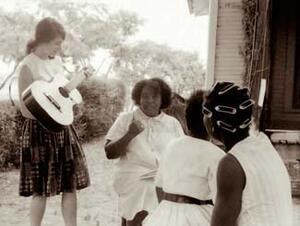Jews and the Civil Rights Movement: There’s more to it than you might think
Today, when most Reform synagogues have a social action committee and when legal segregation is a thing of the past, it may be hard for us to understand how some American Jews could not support and participate in the Civil Rights Movement. Over the last seven months, as I’ve worked on a high school curriculum about Jewish participation in the Civil Rights Movement for the Jewish Women’s Archive, I have been examining this issue and many others that highlight the complexities of Civil Rights history.
Part of what I’ve learned is that only when we are fortunate enough to hold a position of power and privilege can we support the fights of others. While many Northern Jews felt safe enough and powerful enough to help African Americans in the South, many Southerners did not. Equally important is the fact that many Northern Jews felt differently when the Civil Rights Movement came to the North. In their own communities, Northern Jews did not always support bussing to integrate schools or Affirmative Action to help African Americans enter college and new business fields. These events were more immediate and more threatening to Northern Jews. The lives of American Jews in the 1950s and 1960s were complicated, so are our lives today. If we want our young people to feel connected to Judaism and continue our legacy of social justice, we need to share with them a more nuanced history that resonates with them, not a nostalgic picture of larger than life heroes who always do the right thing and make the right choices.
As Reform Jews, we are proud of our legacy of social justice. The many Jews who participated in the pivotal events of the Civil Rights Movement are an example of this. In addition to the general Jewish participation and the work of individual Reform activists, there was official Reform involvement in this social movement. Rabbi Joachim Prinz, who escaped Nazi Germany, gave a speech at the March on Washington. Members of the CCAR and NFTY participated in this March as well, under banners proclaiming their Jewish affiliation. These are the people and events that we generally point to at this time of year or in our religious school classes. But the history of Jewish participation during the Civil Rights Movement is much more complex. And that complexity has much to teach us.
Read more at the Hebrew Union College Blog of Continuing Jewish Learning.
Julia Philips Berger is an education consultant residing in Orlando, FL. Julia has been working with the Jewish Women’s Archive on Living the Legacy, a new curriculum under development focusing on the role of Jews in the American Civil Rights Movement.
Living the Legacy will be the focus of The Power of Our Stories: JWA's Summer 2010 Institute for Educators, a unique professional development opportunity. Click here to learn more about the Institute.







Kol ha kavod, Julia! I'm kvelling!
Helene Ferris